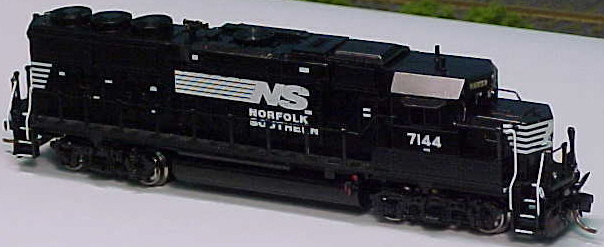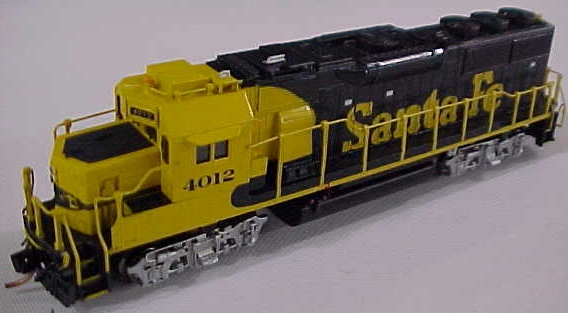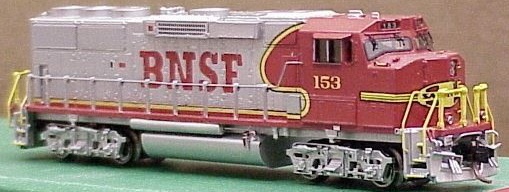| GP59 | GP60 |
 |  |
| GP60M | GP60B |
 |  |
| GP59 | GP60 |
 |  |
| GP60M | GP60B |
 |  |
Introduced: 2000
All of these Overland brass GPXX diesels released in 2000 seem to sport the same basic chassis/mechanism. So, to save myself a bit of time (not to mention money), I'm going to review them all based on the single GP59 I actually purchased and tested.

The chassis is all metal, although relatively flimsy (with most of the actual weight being provided by the fuel tank and the shell). The motor is an open-sided / skew-wound 3-poler with dual flywheels. There are no traction tires, so all eight wheels provide pickup (by way of wheelback wipers). Current is transferred from the trucks to contacts underneath the chassis via more wipers. Current is then conducted to a lengthy PC board atop the chassis by way of long, sprung contacts. Contacts on the chassis PC board transfer current to the motor as well as an LED-equipped PC board mounted inside the shell (which provides directional lighting). All wheels are geared and all gearing is plastic. The wheels are low-profile, so no problems on Code-55 rails. The couplers are chassis-mounted Micro-Trains.
Now, when it comes to Overland/Ajin models, some run better than others (depending on the year in which they were released). But I have to say that this Geep model is one of the best I've encountered from Overland. Performance is absolutely terrific - smooth, responsive, great slow speed performance and great pickup. Amazingly enough, it's even relatively quietly (certainly much quieter than is typical of Ajin brass). Given the 3-pole motor, the top-end speed is awfully high. But, that's a pretty minor quibble. Mine has no problems through turnouts or narrow (9.75") radius curves. Honestly, I'd say this model compares very favorably to modern, state-of-the-art Atlas and Kato diesels.
Better still, the looks are amazing - even for brass. And unlike earlier brass diesels, this model lacks for nothing. You get directional lighting (mounted inside the shell), window glazing (with wipers and everything), number boards, and on and on. Definitely a brass model worthy of its hefty price tag.
To remove the shell, you must first remove the couplers. This will reveal the two screws (one under each coupler) holding the shell to the chassis. Once removed, the shell will lift right off.
Grade: A